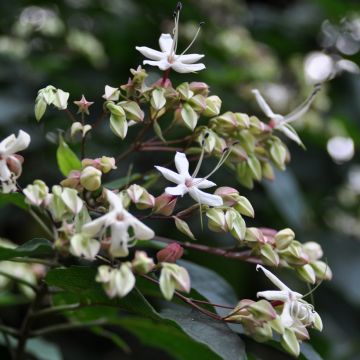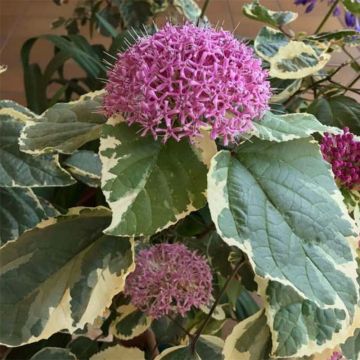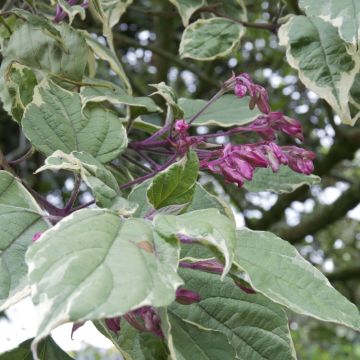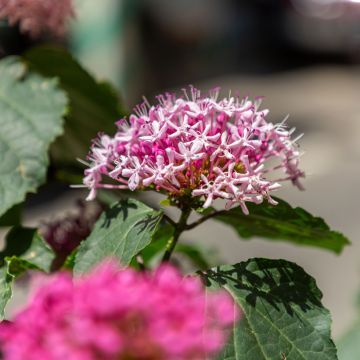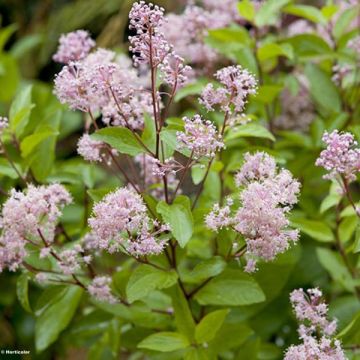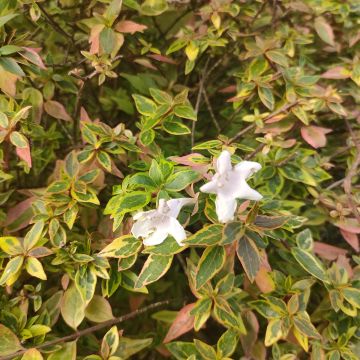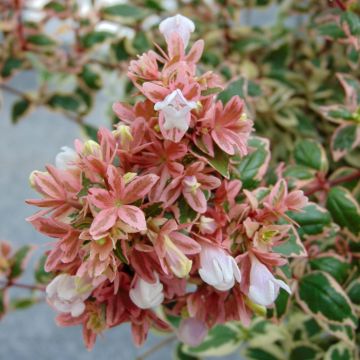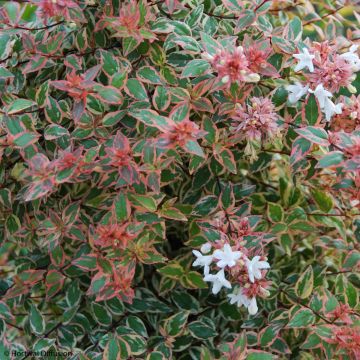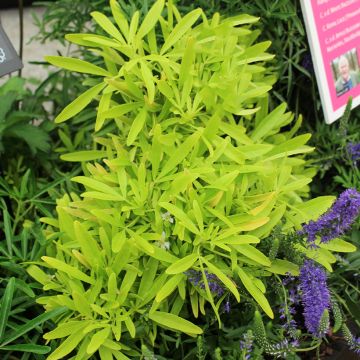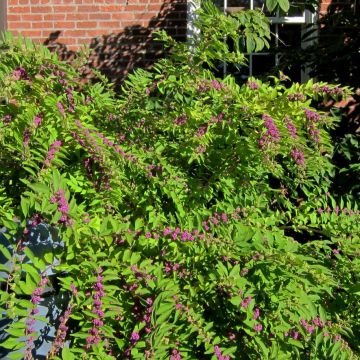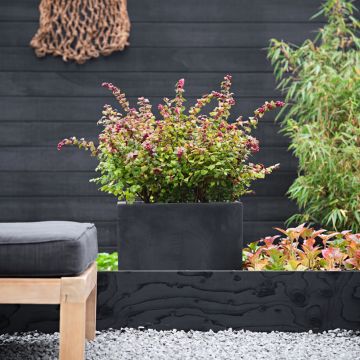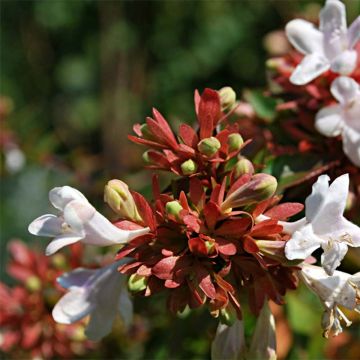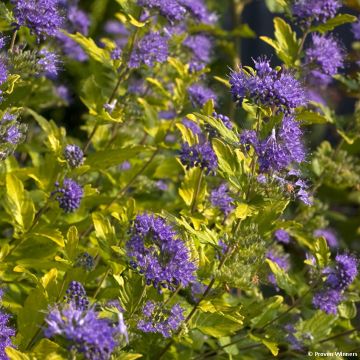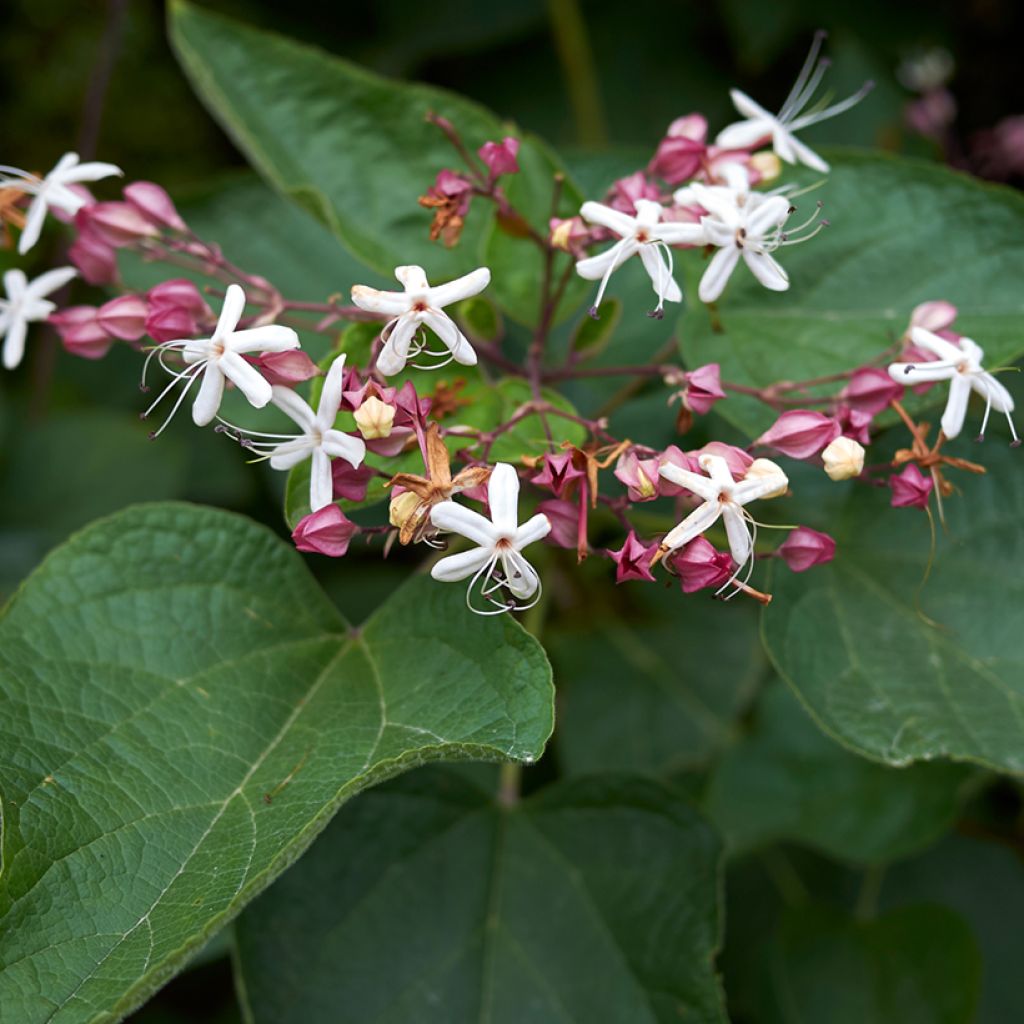

Clerodendrum trichotomum
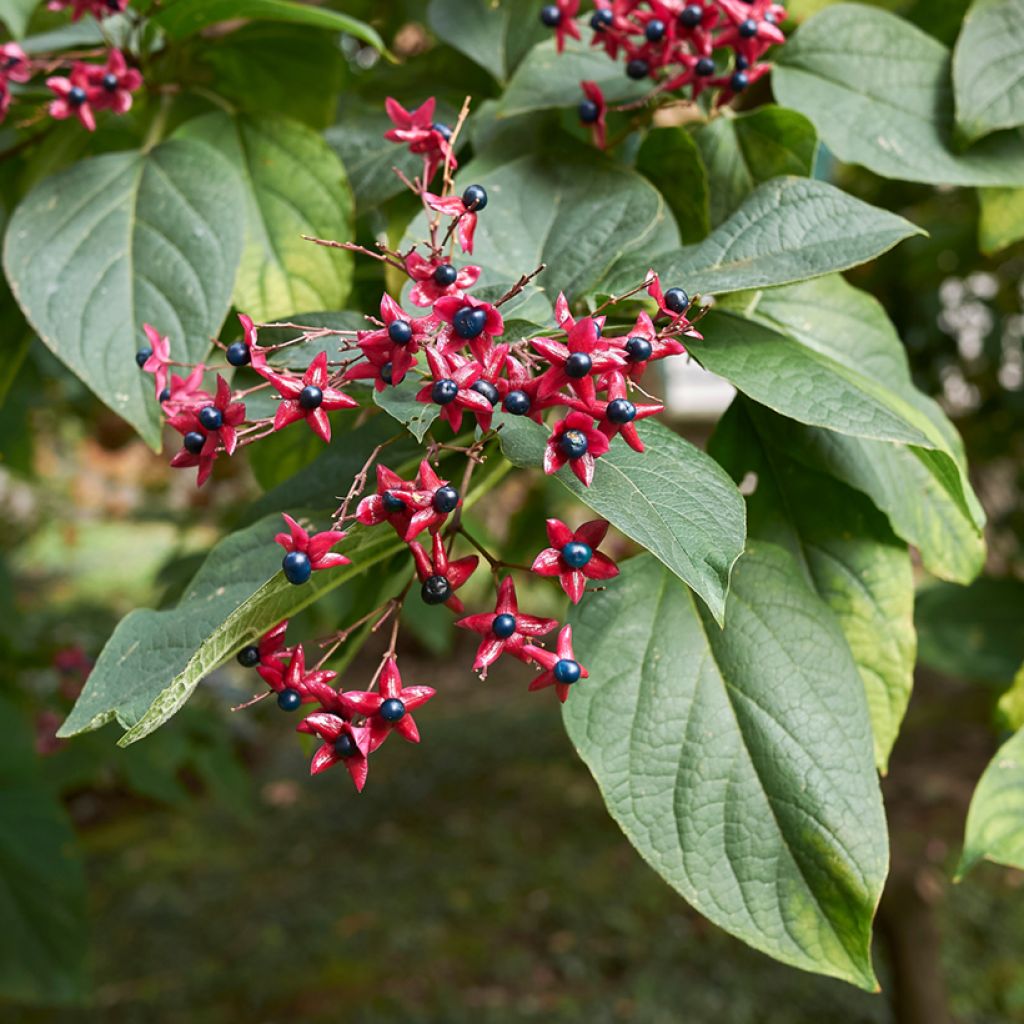

Clerodendrum trichotomum
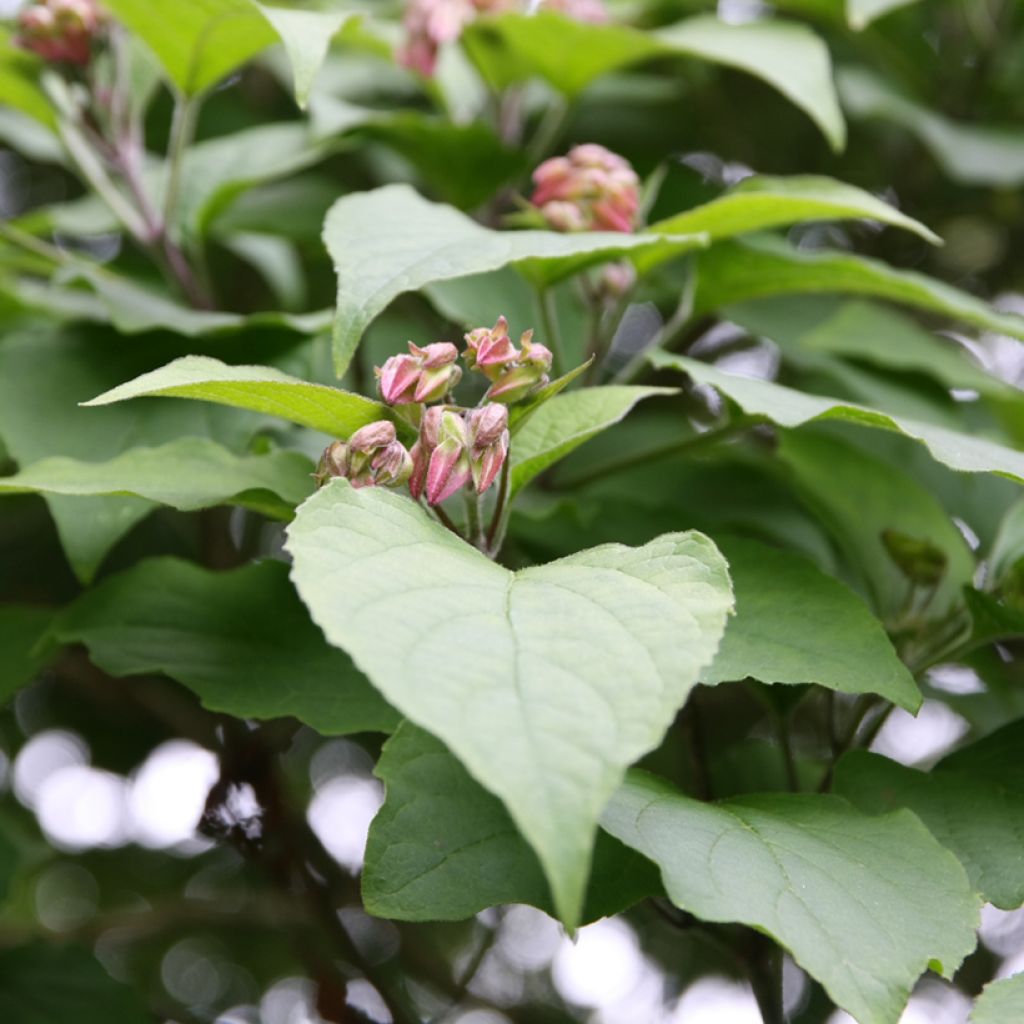

Clerodendrum trichotomum
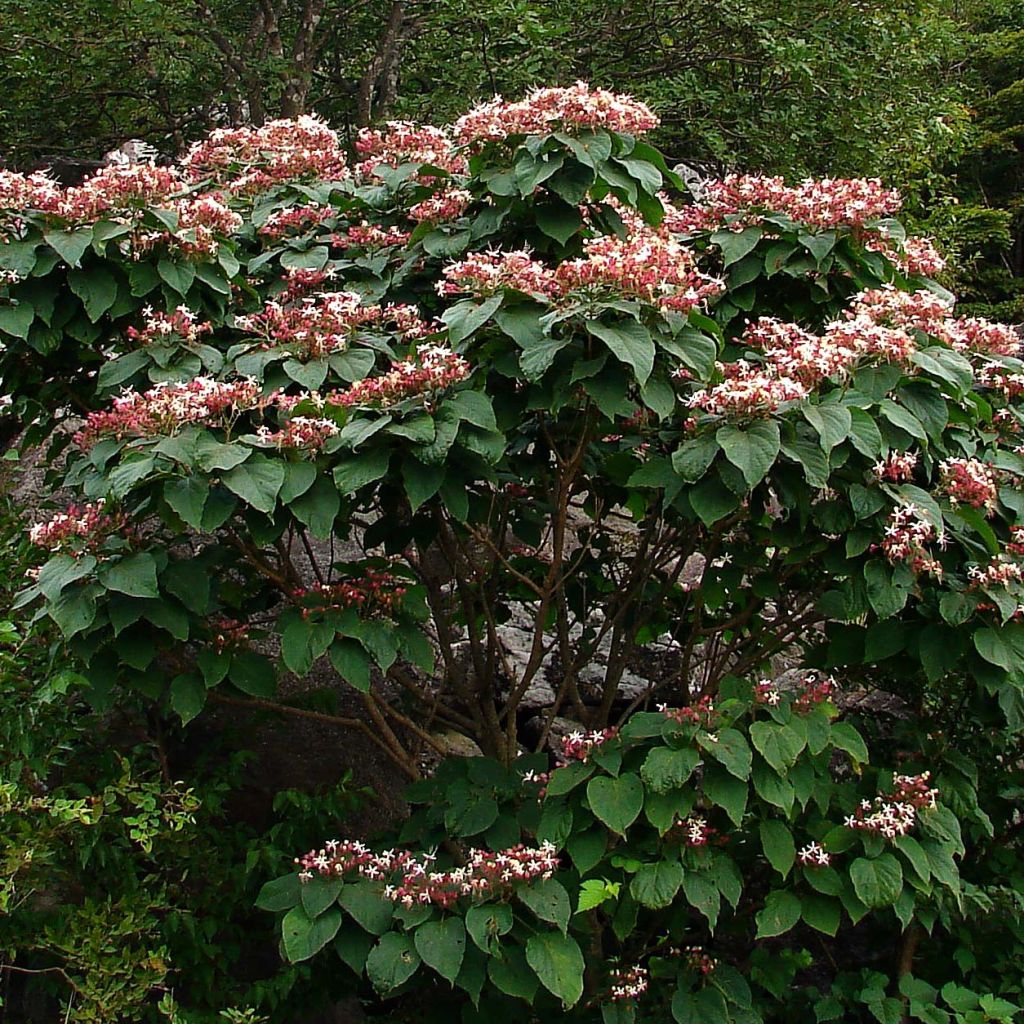

Clerodendrum trichotomum
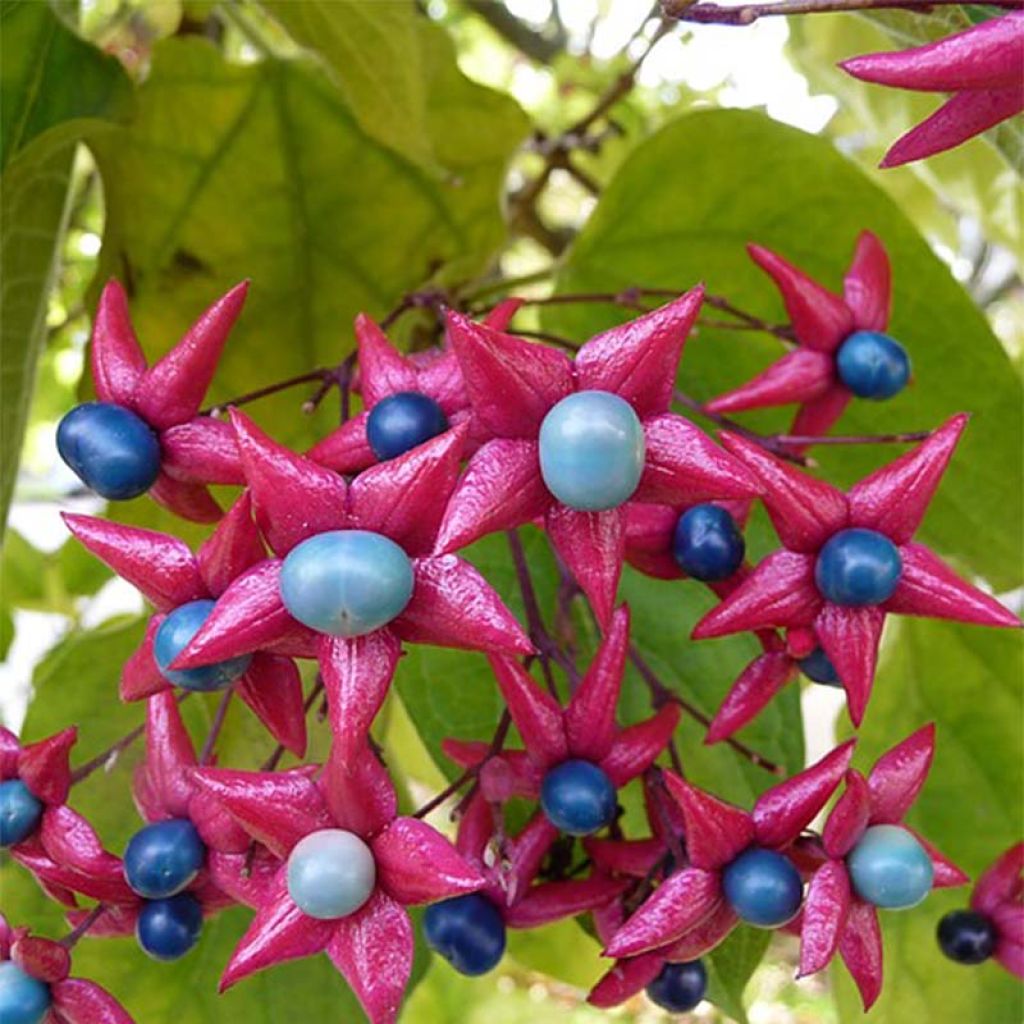

Clerodendrum trichotomum
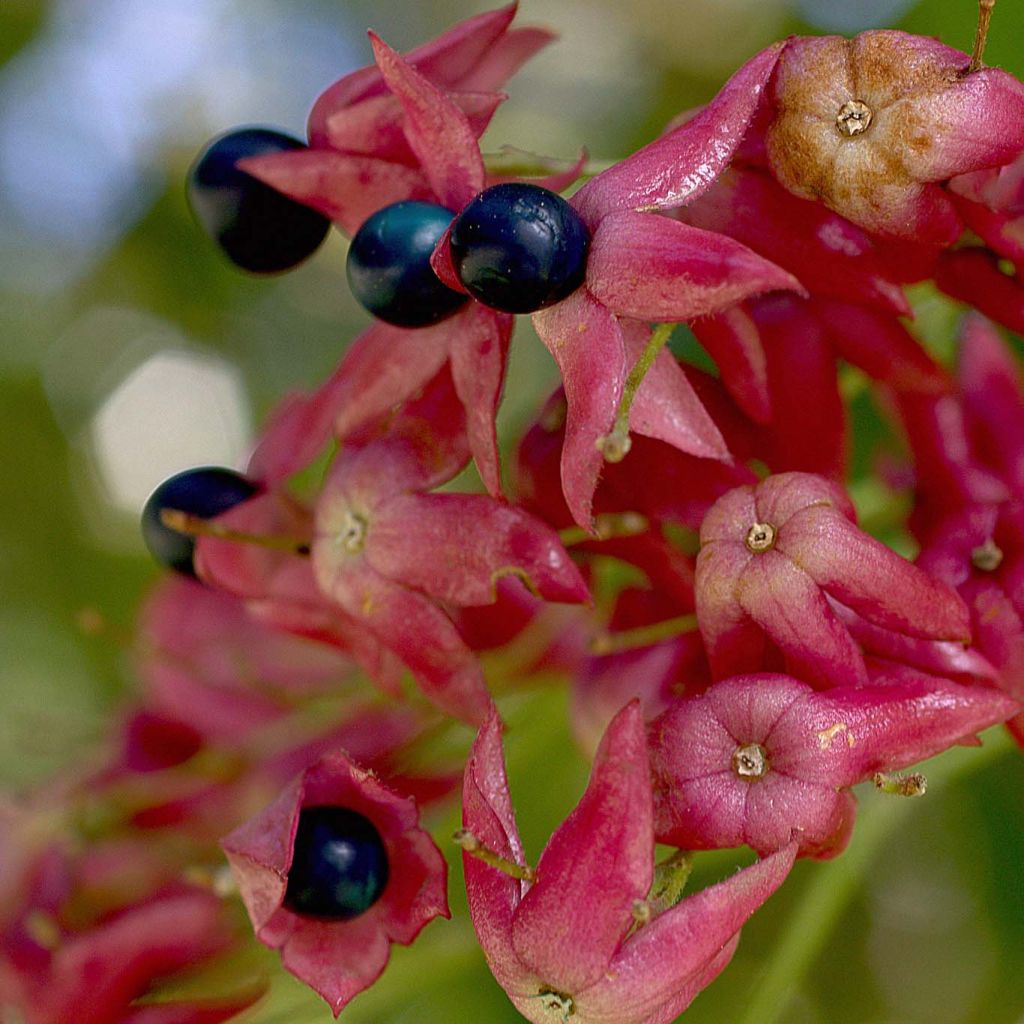

Clerodendrum trichotomum
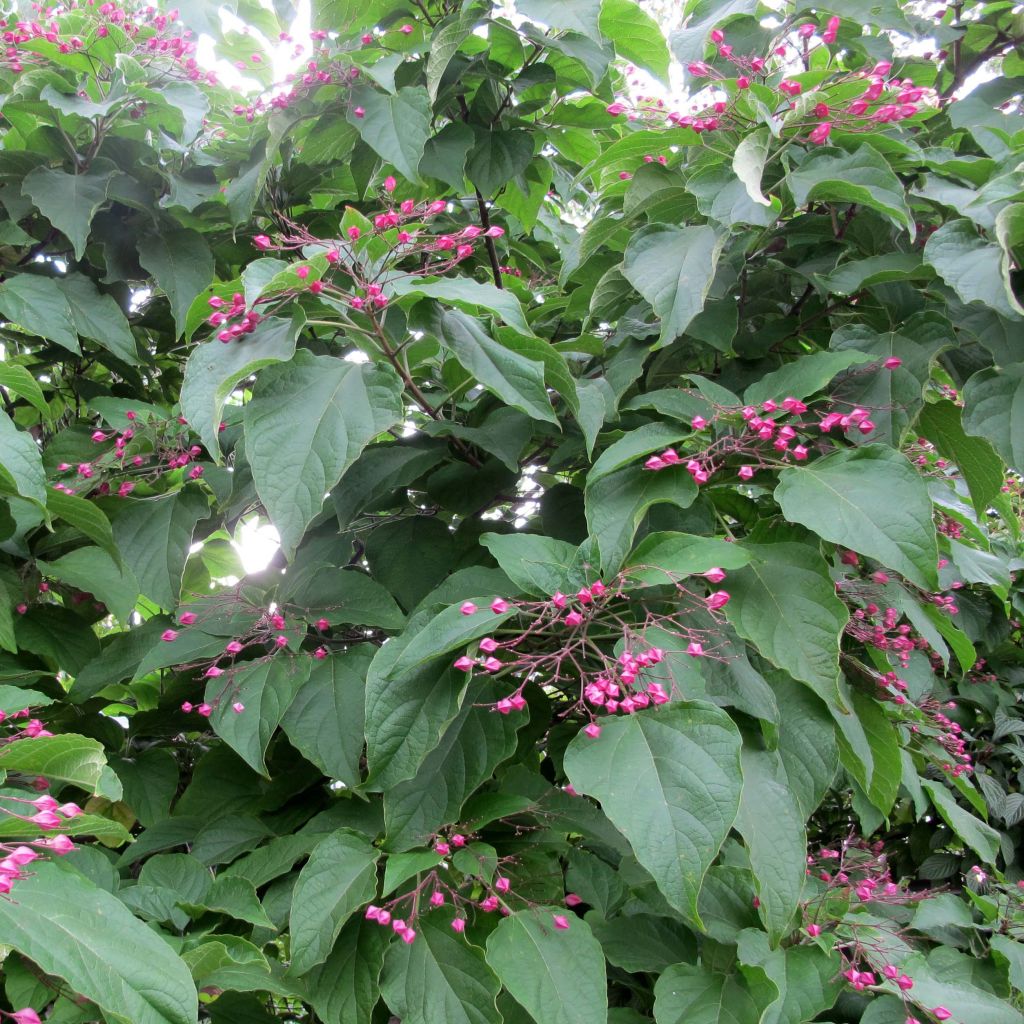

Clerodendrum trichotomum
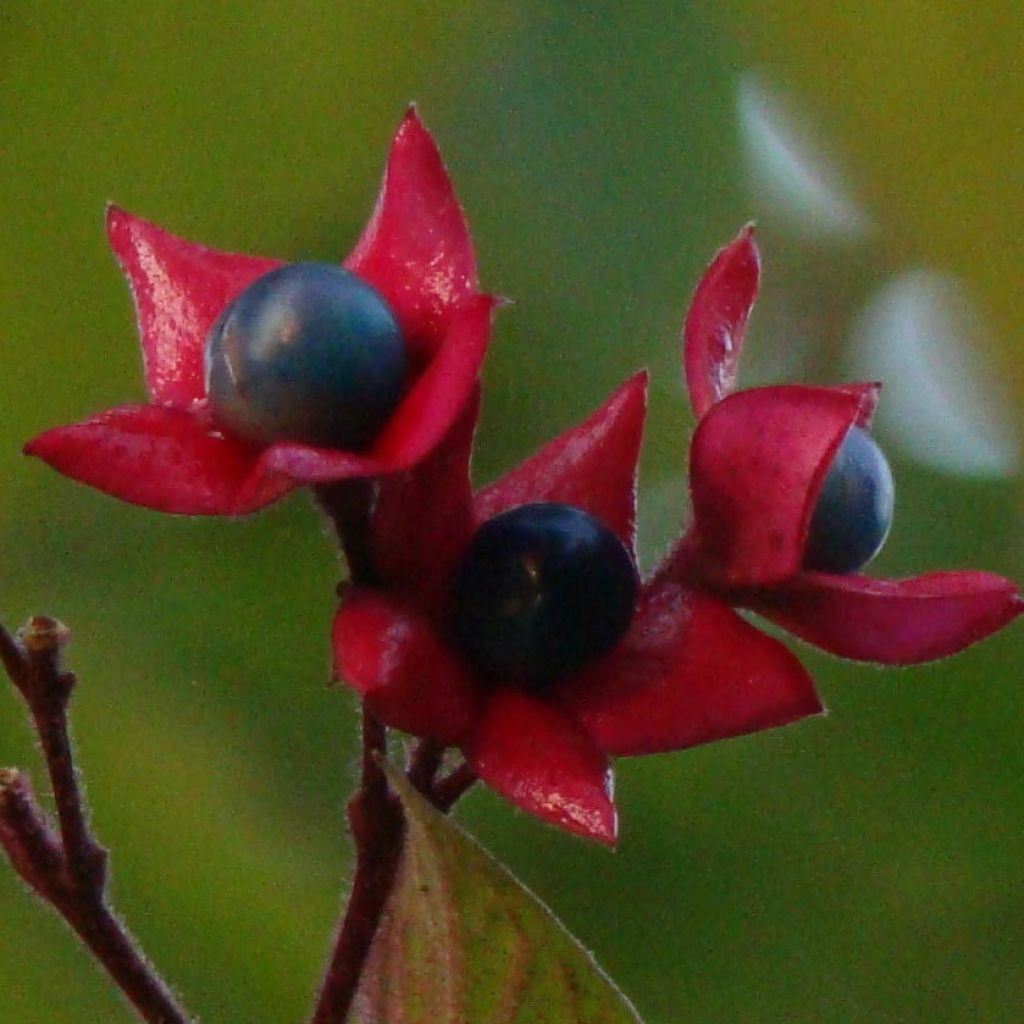

Clerodendrum trichotomum
Clerodendrum trichotomum
Clerodendrum trichotomum
Harlequin Glorybower, Peanut Butter Tree
This item cannot be shipped to the selected country
Delivery charge from €5.90
Delivery charge from €5.90
More information
Schedule delivery date,
and select date in basket
This plant carries a 24 months recovery warranty
More information
We guarantee the quality of our plants for a full growing cycle, and will replace at our expense any plant that fails to recover under normal climatic and planting conditions.
From €5.90 for pickup delivery and €6.90 for home delivery
Express home delivery from €8.90.
From €5.90 for pickup delivery and €6.90 for home delivery
Express home delivery from €8.90.
Does this plant fit my garden?
Set up your Plantfit profile →
Description
Clerodendron trichotomum, also known as the luck tree, clergy tree, or turquoise tree, is a bush with an exotic appearance and exceptional fragrant autumnal flowering. It is adorned with a profusion of turquoise berries set in a bright pink casing. This shrub requires very little maintenance and is rarely sick.
It forms a large, airy shrub with a rounded shape, reaching 3 m to 4 m (9.8 ft to 13.1 ft) in height and 2 m to 3 m (6.6 ft to 9.8 ft) in width. If you take care to trim the lower branches, it can form a small tree on a stem, up to 5 m to 6 m (16.4 ft to 19.7 ft) tall. The young branches are pubescent, which distinguishes it from the other hardy species of the genus Clerodendrum bungei.
Its large opposite, deciduous leaves are ovate in shape, ending in a point and strongly veined. The leaves are of a medium green colour, with a downy underside. Larger in young subjects, they can measure 17 cm to 25 cm (6.7 in to 9.8 in) long by 5 cm to 15 cm (2 in to 5.9 in) wide and have a fine serration. When crushed, they emit a curious peanut-like fragrance, which allows immediate identification. The leaves appear late in spring and are not particularly decorative in autumn as they fall at the first frost, but the shrub offers many other advantages.
In August-September, the luck tree produces a rich and abundant flowering with an almost exotic appearance. The small white star-shaped flowers, carried by an elongated angular calyx washed with purple, are gathered in panicles about 15 cm to 20 cm (5.9 in to 7.9 in) wide, and are highly fragrant. The corolla forms a tube terminated by 5 petals from which sprout 4 stamens and a style, like all members of the Lamiaceae family (formerly Verbenaceae).
In autumn, the shrub is adorned with a profusion of berries, no larger than currants, but of an intense turquoise colour, enclosed in a bright red calyx. This fruiting is more or less regular depending on the year and the climate.
Hardy (-15° C (5° F)) and easy to grow, it thrives in full sun or partial shade, in any well-draining and moist soil without excessive limestone. It only dislikes heavy soils that are waterlogged in winter and excessive heat in summer. Like the tree angelica (Aralia elata), its roots can sometimes produce suckers, but this species suckers much less than Clerodendrum bungei. Its growth is rapid and it has a lifespan of over 30 years. It is sometimes attacked by scale insects.
To enjoy its fragrance, consider planting close to a pathway or near to the home. In a small garden, plant it as a standalone specimen to create a small shade tree. It will enhance the area with its intense fragrance and unique flowering from the end of August to October, when the majority of garden plants are finishing their flowering. However, avoid parking your car underneath it as the fruits stain and attract birds. The shrub also makes an ideal flowering hedge plant and is popular with birds that delight in the fruits. Pair it with shrubs with beautiful autumn colours such as forsythia, Japanese quince, witch hazel, amelanchier, Japanese maple or Persian ironwood, a climbing vine with sumptuous foliage in autumn.
Plant late-flowering perennials such as Helianthus microcephalus, Heliopsis, asters in the foreground.
It is a tolerant plant in terms of soil, as well as cold once established. It will bring an exotic touch to a free hedge or shrub bed.
The genus name Clerodendrum comes from the Greek kleros which means "clergy" and dendrum which means "tree". This genus includes more than 400 species, mostly tropical (tropical Africa and South Asia), consisting of trees, shrubs, climbers, and herbaceous plants. The name "clergy tree" was given to recall their use in Indo-Malay religious ceremonies. The species populates the woods and thickets of Japan, Korea, eastern China, and the Philippines, up to 2300 m (7545.9 ft) in altitude. The variety fargesii is a slightly hardier form (-20° C (-4° F)) from western China, brought to the Vilmorin Arboretum by Father Farges in 1898. Its young leaves are bronze, the calyx green, the branches and leaves glabrous, but the fruits are less vibrant than in the type.
Report an error about the product description
Clerodendrum trichotomum in pictures
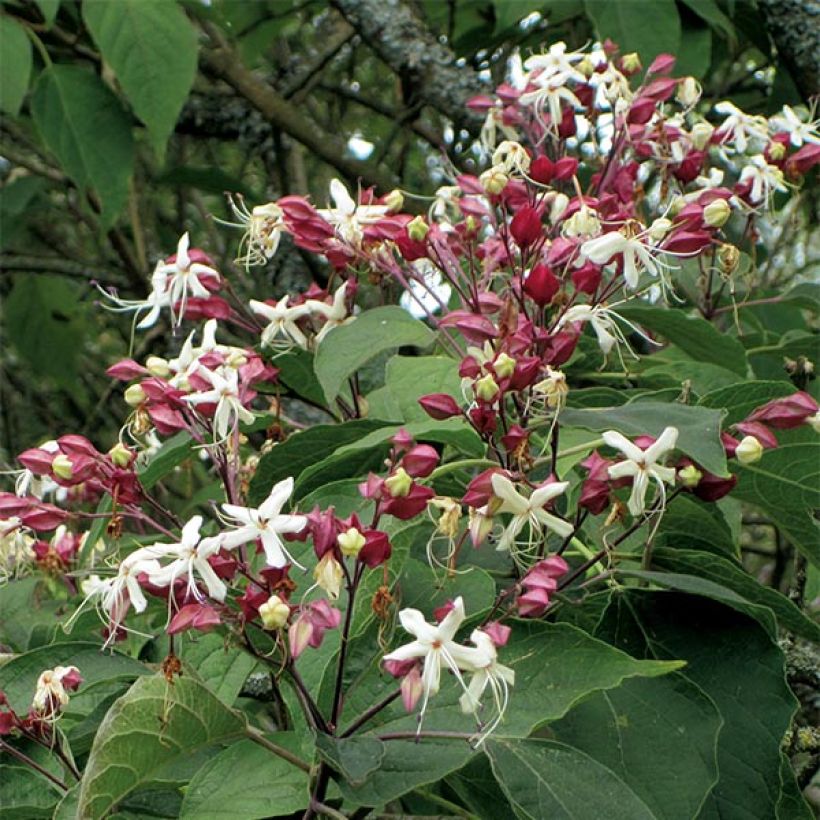

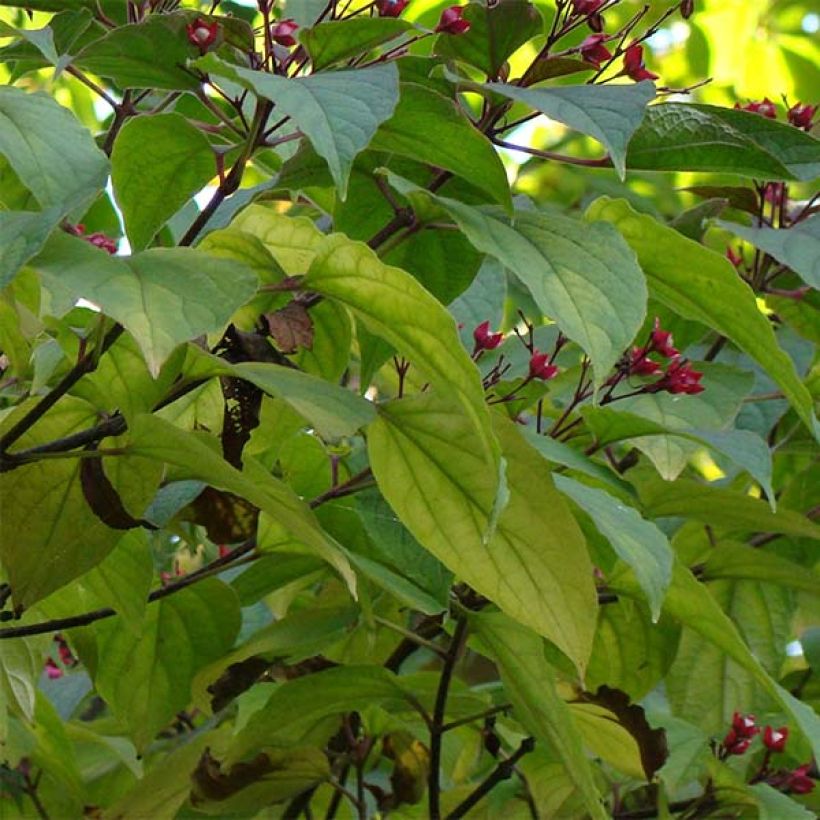

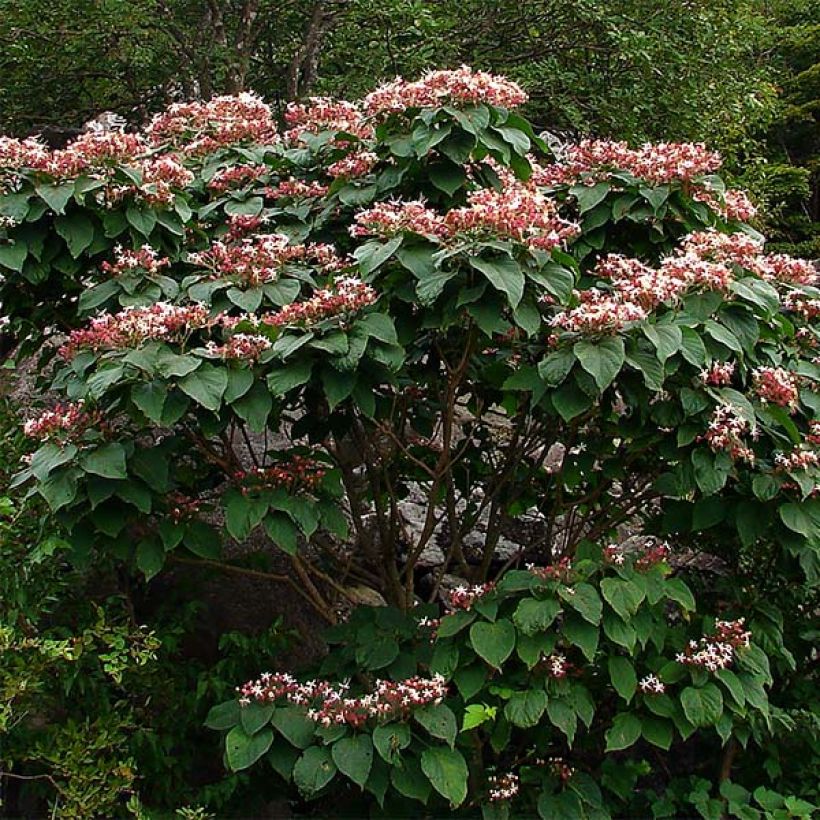

Plant habit
Flowering
Foliage
Botanical data
Clerodendrum
trichotomum
Verbenaceae
Harlequin Glorybower, Peanut Butter Tree
East Asia
Other Clerodendrum
Planting and care
Plant in a deep, rich, moist and well-drained hole, in a location sheltered from strong winds. Use a mixture of garden soil, leaf compost and sand enriched with organic matter (dried blood, crushed horn). Place a 15 cm (5.9 in) layer of gravel at the bottom of the hole if the soil is heavy (sticky when wet). Spread a mulch at its base to maintain soil moisture in summer.
Water generously during the first two years of planting, as well as during the growing season if the bush shows signs of water stress in its foliage (wilting leaves). Apply a slow-release fertiliser every spring.
This plant produces some suckers but they are easy to remove and plant elsewhere. It is not particularly susceptible to diseases, although it may occasionally be attacked by scale insects, red spider mite or whiteflies.
It is hardy to -15° C (5° F).
Its foliage may take time to emerge in spring. Sometimes, impatient gardeners believe it is dead and pull it out. Be patient! Even if the branches appear dead, the first leaves do not sprout until late April or early May.
Pruning involves clearing the centre of the branches to allow light to penetrate, in late winter (March). Also remove dead wood or troublesome branches.
Planting period
Intended location
Care
-
, onOrder confirmed
Reply from on Promesse de fleurs
Late-flowering shrubs
Haven't found what you were looking for?
Hardiness is the lowest winter temperature a plant can endure without suffering serious damage or even dying. However, hardiness is affected by location (a sheltered area, such as a patio), protection (winter cover) and soil type (hardiness is improved by well-drained soil).

Photo Sharing Terms & Conditions
In order to encourage gardeners to interact and share their experiences, Promesse de fleurs offers various media enabling content to be uploaded onto its Site - in particular via the ‘Photo sharing’ module.
The User agrees to refrain from:
- Posting any content that is illegal, prejudicial, insulting, racist, inciteful to hatred, revisionist, contrary to public decency, that infringes on privacy or on the privacy rights of third parties, in particular the publicity rights of persons and goods, intellectual property rights, or the right to privacy.
- Submitting content on behalf of a third party;
- Impersonate the identity of a third party and/or publish any personal information about a third party;
In general, the User undertakes to refrain from any unethical behaviour.
All Content (in particular text, comments, files, images, photos, videos, creative works, etc.), which may be subject to property or intellectual property rights, image or other private rights, shall remain the property of the User, subject to the limited rights granted by the terms of the licence granted by Promesse de fleurs as stated below. Users are at liberty to publish or not to publish such Content on the Site, notably via the ‘Photo Sharing’ facility, and accept that this Content shall be made public and freely accessible, notably on the Internet.
Users further acknowledge, undertake to have ,and guarantee that they hold all necessary rights and permissions to publish such material on the Site, in particular with regard to the legislation in force pertaining to any privacy, property, intellectual property, image, or contractual rights, or rights of any other nature. By publishing such Content on the Site, Users acknowledge accepting full liability as publishers of the Content within the meaning of the law, and grant Promesse de fleurs, free of charge, an inclusive, worldwide licence for the said Content for the entire duration of its publication, including all reproduction, representation, up/downloading, displaying, performing, transmission, and storage rights.
Users also grant permission for their name to be linked to the Content and accept that this link may not always be made available.
By engaging in posting material, Users consent to their Content becoming automatically accessible on the Internet, in particular on other sites and/or blogs and/or web pages of the Promesse de fleurs site, including in particular social pages and the Promesse de fleurs catalogue.
Users may secure the removal of entrusted content free of charge by issuing a simple request via our contact form.
The flowering period indicated on our website applies to countries and regions located in USDA zone 8 (France, the United Kingdom, Ireland, the Netherlands, etc.)
It will vary according to where you live:
- In zones 9 to 10 (Italy, Spain, Greece, etc.), flowering will occur about 2 to 4 weeks earlier.
- In zones 6 to 7 (Germany, Poland, Slovenia, and lower mountainous regions), flowering will be delayed by 2 to 3 weeks.
- In zone 5 (Central Europe, Scandinavia), blooming will be delayed by 3 to 5 weeks.
In temperate climates, pruning of spring-flowering shrubs (forsythia, spireas, etc.) should be done just after flowering.
Pruning of summer-flowering shrubs (Indian Lilac, Perovskia, etc.) can be done in winter or spring.
In cold regions as well as with frost-sensitive plants, avoid pruning too early when severe frosts may still occur.
The planting period indicated on our website applies to countries and regions located in USDA zone 8 (France, United Kingdom, Ireland, Netherlands).
It will vary according to where you live:
- In Mediterranean zones (Marseille, Madrid, Milan, etc.), autumn and winter are the best planting periods.
- In continental zones (Strasbourg, Munich, Vienna, etc.), delay planting by 2 to 3 weeks in spring and bring it forward by 2 to 4 weeks in autumn.
- In mountainous regions (the Alps, Pyrenees, Carpathians, etc.), it is best to plant in late spring (May-June) or late summer (August-September).
The harvesting period indicated on our website applies to countries and regions in USDA zone 8 (France, England, Ireland, the Netherlands).
In colder areas (Scandinavia, Poland, Austria...) fruit and vegetable harvests are likely to be delayed by 3-4 weeks.
In warmer areas (Italy, Spain, Greece, etc.), harvesting will probably take place earlier, depending on weather conditions.
The sowing periods indicated on our website apply to countries and regions within USDA Zone 8 (France, UK, Ireland, Netherlands).
In colder areas (Scandinavia, Poland, Austria...), delay any outdoor sowing by 3-4 weeks, or sow under glass.
In warmer climes (Italy, Spain, Greece, etc.), bring outdoor sowing forward by a few weeks.

































